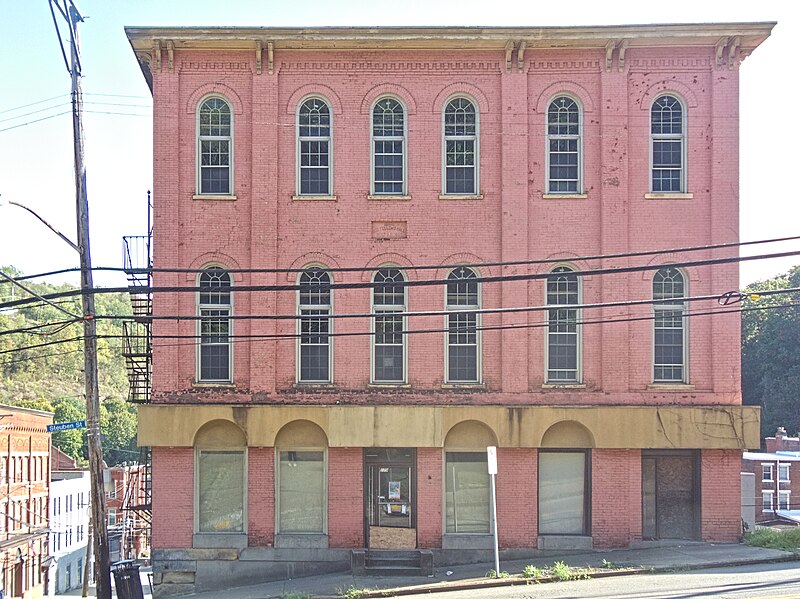
We have a good number of houses from a century and a half or more ago, but very few public buildings remain in Pittsburgh from the Civil War era. Here is one. This Odd Fellows Hall was built in 1865, when the West End was Temperanceville. It seems to have been extended by one bay on the right not long after it was built.

It seems to old Pa Pitt that this ought to be one of our high preservation priorities. It is nearly unique in being a secular public building from the middle nineteenth century; Pittsburgh’s prosperity and rapid growth meant that most others were replaced by bigger ones around the turn of the twentieth century. It is also in very good historical shape: aside from the mutilated ground floor, it is in very close to original condition. But it is in a neglected neighborhood where it could not yet be turned into profitable loft apartments, in spite of ongoing efforts to turn the West End into an artsy village.

This building inspires Father Pitt to imitate the International Union for the Conservation of Nature and classify our vulnerable landmarks in six categories: Least Concern, Near Threatened, Vulnerable, Endangered, Critically Endangered, and Demolished. We shall call this building Vulnerable, because it is a large building in a neglected neighborhood, on a street where a majority of the buildings have been demolished.


